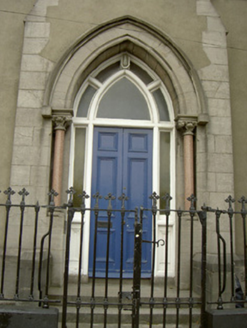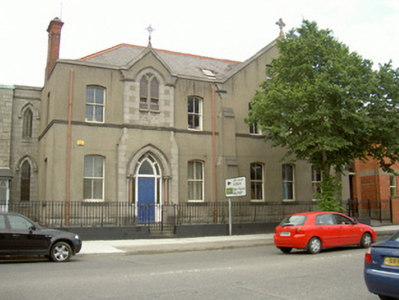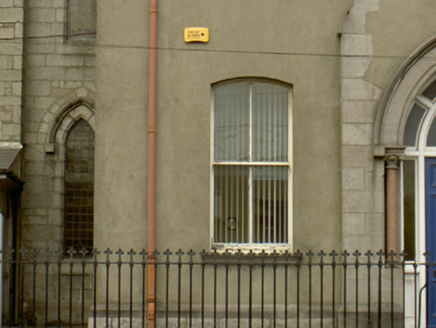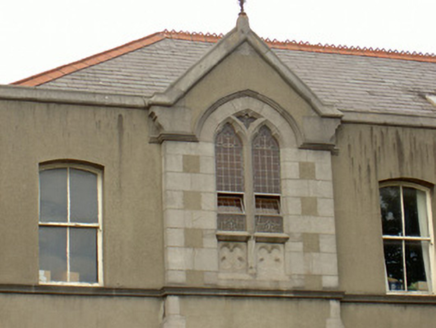Survey Data
Reg No
13705039
Rating
Regional
Categories of Special Interest
Architectural, Social
Original Use
School
In Use As
School
Date
1890 - 1910
Coordinates
305460, 307426
Date Recorded
25/07/2005
Date Updated
--/--/--
Description
Attached six-bay two-storey with attic school, built c. 1900. L-plan, pedimented breakfront to west of main elevation. Pitched and hipped slate roofs, crested terracotta ridge tiles, terracotta hip tiles, red brick stepped corbelled chimneystack, decorative metal crucifix finial to west gable apex, stone crucifix to east gable, circular cast-iron downpipes. Unpainted smooth rendered walling, rock-faced granite plinth, moulded string course, angle buttresses to east, tooled stone quoins to breakfront, moulded kneelers, roll-top granite wall cornice, raking cornices to pediment and gable, empty pedimented statue niche to east gable with base supported on carved angel corbel. Segmental-headed window openings, moulded limestone sills, painted timber two-over-two sliding sash windows, paired single-pane openings to east gable; Tudor arch window opening to breakfront, limestone hood moulding, arch and block-and-start jambs, tracery window, leaded stained glass, recessed aprons with carved quatrefoil motifs. Pointed arch door opening, stone hood moulding, polished pink granite Corinthian colonnettes with stone caps on sill plinths supporting roll-moulded stone arch, painted timber three-panel double doors with sidelights, plain-glazed overlight with margin lights, accessed by three granite steps. Site bounded by wrought- and cast-iron gates and railings with crucifix finials mounted on painted stone plinth. Street fronted, attached to chapel building to west and red brick school building to east.
Appraisal
This school building, dating from the turn of the nineteenth century, is of considerable architectural merit. Employing a mix of high quality building materials and an attractive design, it is an important part of the historic, social and religious history of Dundalk. The fine stone embellishments attest to the skilled craftsmanship employed in its construction.







